Iranian cuisine brings unique flavors and aromas to dishes by adding various spices. In Iranian cooking, Persian Spices not only add distinctive tastes and scents to meals but are often used as main ingredients. Colorful Persian Spices have been used since ancient times and have diversified over the years.
These spices give dishes unique tastes, colors, and aromas, distinguishing Iranian food from other global cooking styles. Some of the most commonly used spices include cardamom, cinnamon, black pepper, and turmeric, which are used in stews, pilafs, soups, and sauces.
Using Persian Spices in cooking reflects the history and dynamic culture of Iran and symbolizes the cultural richness of the land. Therefore, in this article from the Parsi Tours, Iranian travel agency, we will take you to a virtual Iran culinary tour.
12 Popular and Commonly Used Persian Spices
As mentioned earlier, spices play a significant role in Iranian cooking, adding unique flavors and aromas to dishes. Below, we introduce several of the most popular and widely used aromatic Persian Spices.
1- Saffron: A Priceless Spice
Saffron, one of the world’s most expensive and valuable spices, is globally renowned for its production in Iran. This spice, with its amazing yellow color and unique flavor and aroma, is extensively used in Iranian cuisine. Saffron is also considered one of the strongest medicinal plants among Persian Spices.
Saffron is used in a variety of beverages, syrups, herbal teas, saffron ice cream, and various dishes and snacks. It has a warm and dry nature and is particularly used to balance the temperament of cold dishes like rice. Additionally, its numerous culinary properties, such as boosting the immune system, have led to its use in treating many diseases.
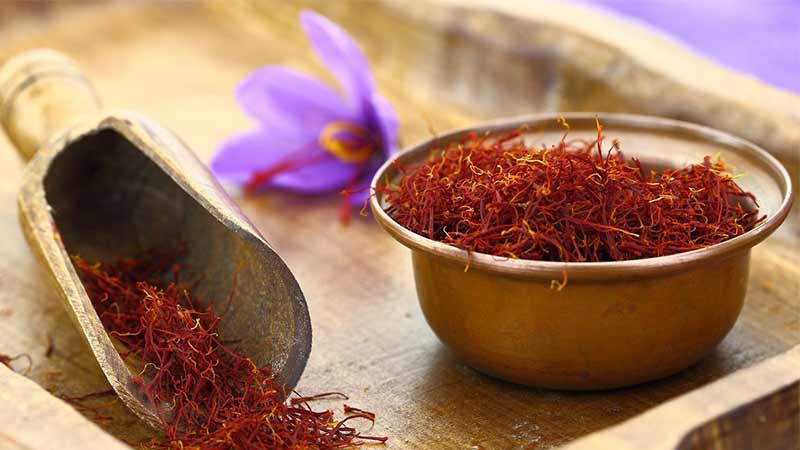
2- Cumin: An Iranian Spice with a Distinct Flavor and Color
Cumin, another widely used Iranian spice, has a bitter taste and a mild aroma, adding a unique scent and flavor to various dishes. It is often used in powdered form in cooking. As a bitter Iranian spice from Kerman, cumin is extensively used in Iranian-style cooking in stews and soups, adding a pleasant and delightful aroma.
Cumin is also used in traditional medicine to treat numerous digestive diseases. Some of its culinary uses include:
In stews: Cumin adds a special flavor and aroma to stews and can be used in meat, legume, and vegetable stews.
In preparing chicken and meat: Cumin can add a unique taste to chicken and meat. It can be added in powdered form to chicken and meat mixtures or used to marinate them before cooking.
In making various sauces: Cumin can add a pleasant flavor and aroma to sauces. It can be added to tomato, cream, and yogurt sauces to enhance their flavor.
In bread and various bakes: Cumin is added to bread and various bakes like pizza and Sangak bread to enhance their flavor and taste.
In Iranian cuisine: Cumin is also used in preparing Iranian stews like Ghormeh Sabzi.
In making condiments: Cumin can add a special flavor and aroma to condiments and accompaniments. It can be added to pasta, rice, salads, etc., to enhance their flavor and taste.
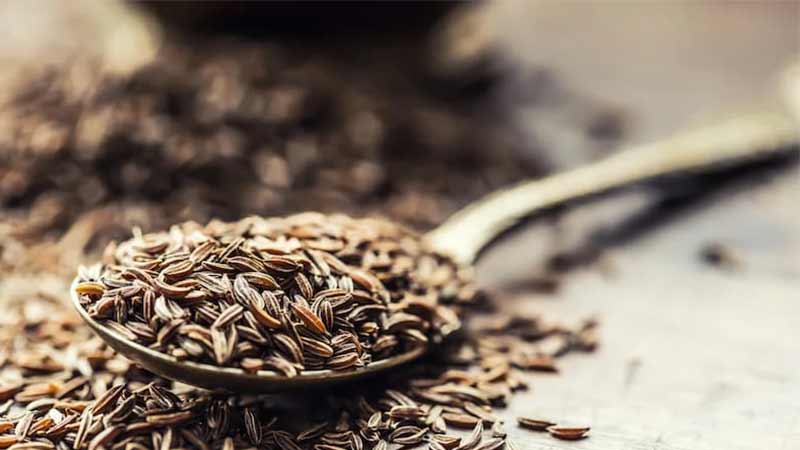
3- Cinnamon: A Sweet-Tasting Iranian Spice
Cinnamon is a popular spice with a sweet taste used in various Iranian dishes, making food very aromatic and tasty. This authentic Iranian spice, obtained from cinnamon tree bark, is used not only in cooking but also in traditional medicine for various diseases such as blood pressure, weight loss, and breath shortness. Cinnamon can also be mixed with other spices like cardamom to make a herbal tea.
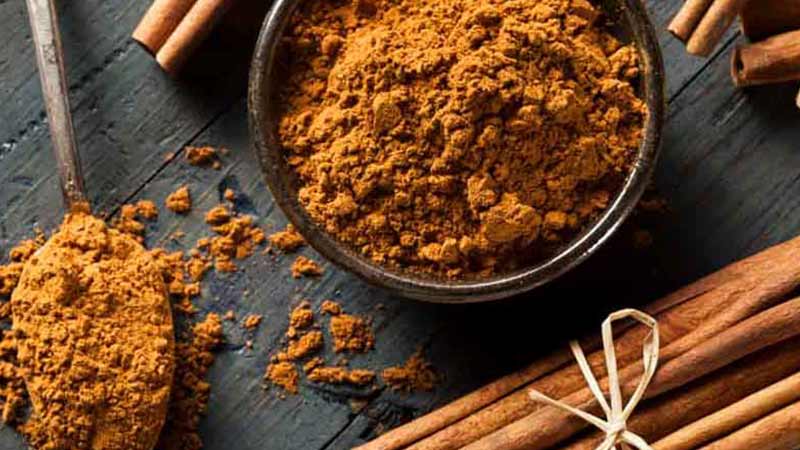
4- Cardamom: A Fragrant Iranian Spice as a Flavor Enhancer
Cardamom, a highly fragrant Iranian spice, is often used as a flavor enhancer in various beverages, herbal teas, food, etc. With its warm nature, cardamom is used to balance the temperament of cold foods. This spice is found in almost every Iranian household and has many health benefits.
Cardamom seeds have a green outer shell and a white or brown interior. After breaking the outer shell, the inner seeds are obtained, which have a sweet and fragrant taste and aroma. Cardamom can be used whole or ground in foods, sweets, bread, desserts, tea, coffee, and other beverages. It also has various uses in traditional medicine. Some of cardamom’s properties include:
Anti-inflammatory and antiseptic: Cardamom has anti-inflammatory and antiseptic properties and can be used to treat mouth and gum inflammations, respiratory tract infections, etc.
Relieving digestive problems: Cardamom can help relieve digestive issues like indigestion, bloating, intestinal gases, and stomachache.
Boosting the immune system: Cardamom has antioxidant properties that can strengthen the body’s immune system and protect against diseases.
Increasing relaxation and reducing stress: Cardamom has calming properties and can help reduce stress and increase relaxation.
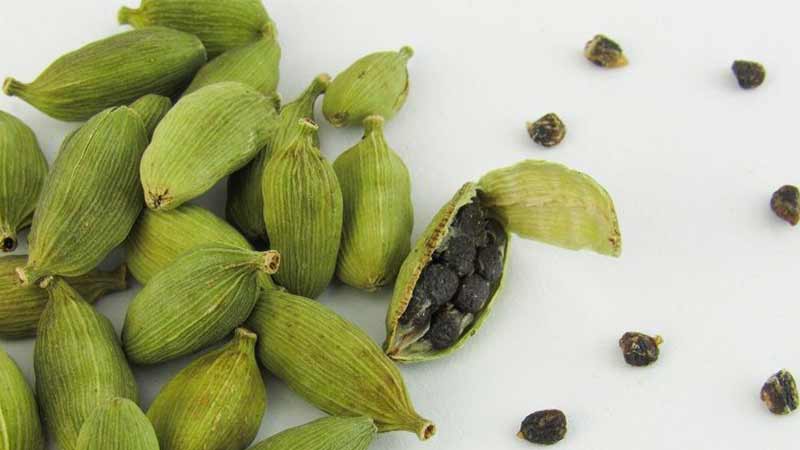
5-Thyme: A Spicy and Fragrant Spice with Disinfectant Properties
Thyme is a spicy and fragrant spice used in Iranian cooking. Its different aroma and flavor add freshness and zest to dishes. This spice is available in dried and powdered form or as fresh leaves.
Thyme is a popular spice in cooking and has a mild and pleasant taste that can be used in preparing various dishes like chicken, meat, fish, vegetables, sauces, and bread. Besides culinary uses, thyme is also used in traditional and complementary medicine. Some of thyme’s properties include:
Antibacterial and anti-inflammatory properties: Thyme has antibacterial and anti-inflammatory properties and can be useful in treating various infections and inflammations like respiratory tract inflammation and intestinal inflammation.
Antioxidant properties: Thyme has antioxidant properties that can help combat oxidative damages and protect cells against them.
Relieving digestive problems: Thyme can help reduce digestive issues like bloating and indigestion.
Cosmetic and hygienic use: Thyme extract or oil might be used in making cosmetic and hygienic products like soaps, creams, and shampoos as a fragrance and antibacterial agent.
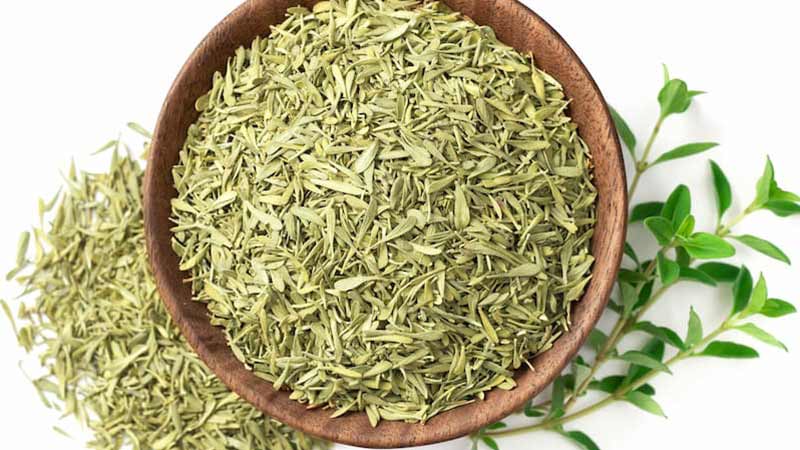
6- Paprika: A Spice from the Pepper Family
Paprika is a popular spice in cooking, made by drying and grinding various types of red pepper. Some of the uses of paprika in cooking include:
As a spice in stews and sauces: Paprika gives dishes a special flavor and color. It is used as a popular spice in preparing stews, sauces, ragouts, and meat dishes.
As a spice in making marinades: Paprika can add a pleasant color and aroma to marinade mixtures. It is used in making marinades for fish, chicken, meat, and even vegetables.
As a food decoration: With its attractive red color, paprika can be used as a beautiful decoration on salads, soups, serving tables, and cooked dishes.
In making Mexican dishes: Paprika is an important spice in Mexican cuisine.
Paprika can give sauces and picantes a unique flavor and color. By adding paprika to different sauces like ketchup, mayonnaise, or tomato-based sauces, you can change their taste and color.
Paprika is also used in Iranian cooking, but not as much as in some other cooking cultures. However, it might be used in some Iranian dishes like Ghormeh Sabzi and eggplant stew.
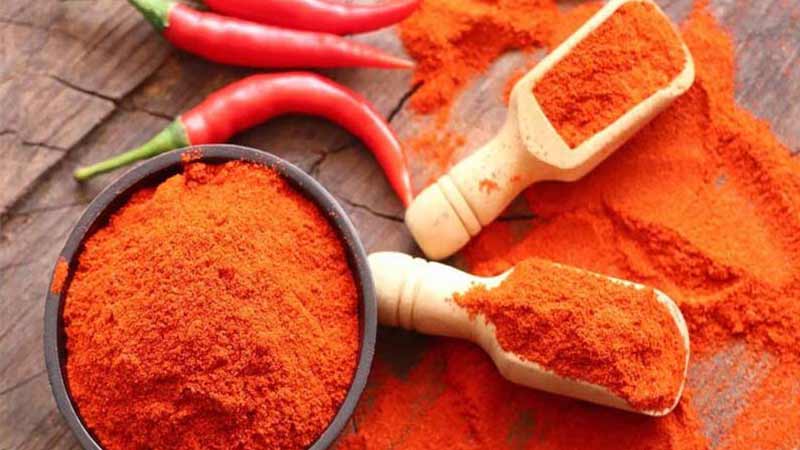
7- Curry Powder: A Mixture of Several Herbs
Curry powder is a mixture of various spices used in cooking. This mixture usually includes ingredients like cinnamon, cardamom, ginger, black pepper, coriander seeds, carrots, bay leaves, cloves, and other spices.
Using curry powder in cooking adds more flavor to dishes and can be an excellent alternative to individual spices. Some of the uses of curry powder in cooking include:
In preparing meat dishes: Curry powder is usually used as a main spice in meat dishes like Ghormeh Sabzi. This mixture gives food a special flavor and aroma and may contain spices like black pepper, ginger, and cinnamon.
In preparing vegetable dishes: Curry powder can be added to vegetable stews to affect their taste and color.
In preparing seafood dishes: Some curry powders include ingredients like saffron and cardamom, which are usually used in making seafood dishes like fish pilaf or shrimp.
In preparing Indian dishes: There are also specific curry powders in Indian cuisine used in making Indian dishes like biryani, curry, and tandoori.
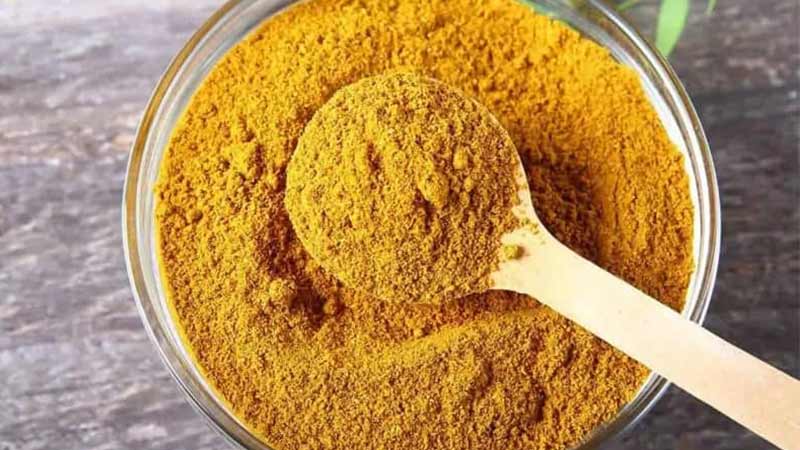
8-Sumac: A Sour-Tasting Spice
Sumac is a popular and widely used spice in cooking. This spice plays an important role in the taste of dishes and is used in many different dishes like kebabs. Some of the uses of sumac in cooking include:
Use in salads: Sumac gives salads a beautiful taste and color. You can add it to vegetable salads, seasonal salads, fish salads, etc.
Use in preparing chicken and meat: Sumac can give chicken and meat a spicy and sour taste. You can add it in powdered form to chicken and meat mixtures or use it to marinate them before cooking.
Use in Middle Eastern dishes: Sumac gives Middle Eastern dishes like falafel, kofta, yogurt, etc., a special taste.
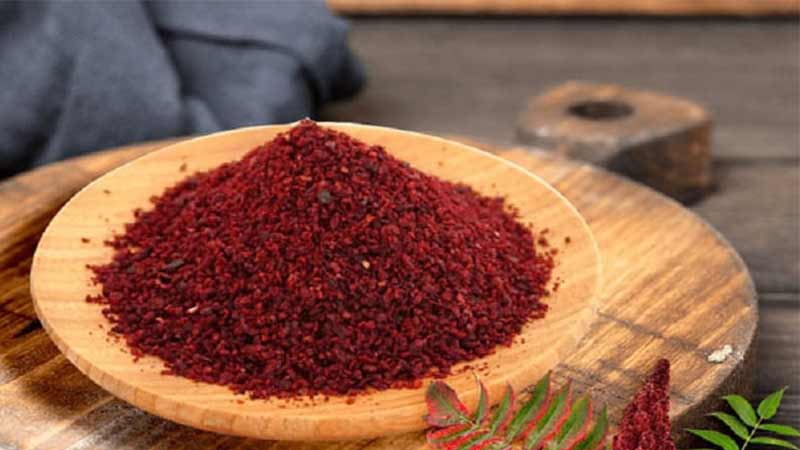
9- Black Pepper: A Spice with a Warm Nature
Black pepper is also one of the widely used and famous spices in cooking. This spice has a spicy and bitter taste and gives dishes a special flavor and taste. Some of the uses of black pepper in cooking include:
Use in Cooking Meat Dishes: Black pepper gives a spicy and bitter taste to meat dishes such as steaks, kebabs, and stews. You can add it to meat mixtures before cooking or during the cooking process.
Use in Preparing Chicken and Fish: Black pepper can add a spicy and bitter punch to the taste of chicken and fish. You can add it in powder form to chicken and fish mixtures, or marinate them in crushed black pepper before cooking.
Use in Cooking Vegetables: Black pepper adds a spicy and bitter flavor to vegetables like spinach, broccoli, cabbage, etc. You can add it while cooking vegetables or in sauces and other mixtures used with vegetables.
Use in Making Sauces and Pickles: Black pepper can be added to tomato sauce, mayonnaise, soy sauce, etc. It is also used in making various pickles like pickled cucumbers.
Also, black pepper is used in traditional medicine due to its antibacterial, anti-inflammatory, and antioxidant properties. Some of the health benefits associated with consuming black pepper include:
Improving digestion and reducing digestive issues like bloating, indigestion, and stomach aches.
Enhancing blood flow and heart function.
Increasing nutrient absorption in the body.
Reducing inflammation and accelerating the healing of muscle and joint injuries.
Boosting energy levels and reducing fatigue.
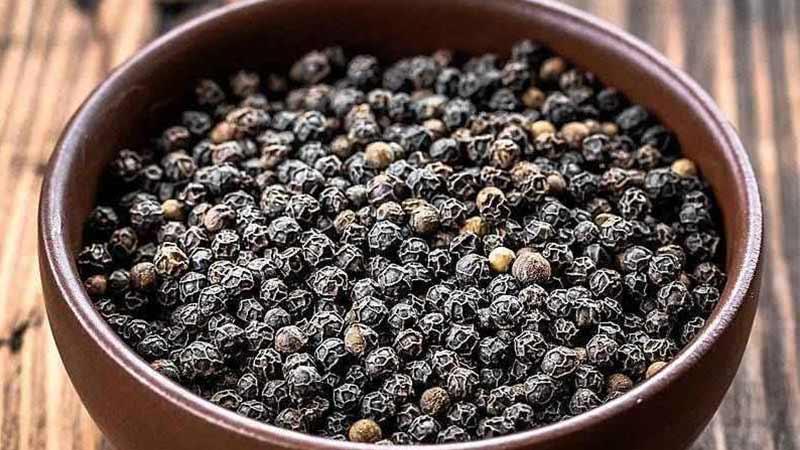
10- Red Pepper: A Popular and Spicy Seasoning
Red pepper is a commonly used spice in preparing various stews and sauces, popular for adding a spicy flavor. It’s one of the widely used seasonings in cooking. Below are some of the uses of red pepper in cooking:
Use in Cooking Asian Dishes: Red pepper adds a spicy taste to Asian dishes like soup, biryani, and sauces. You can add it to the ingredients before cooking or during the cooking process.
Use in Cooking Mexican Dishes: Red pepper is an important spice in Mexican cooking for dishes like tacos, fajitas, salsa, and is a key ingredient in some of these dishes.
Use in Making Sauces and Seasonings: You can add red pepper to tomato sauce, mayonnaise, soy sauce, etc. It is also used in making seasonings like Mexican seasoning, chicken seasoning, etc.
Use in Marinades: Red pepper adds a spicy flavor to marinades and oils, and can be added to meat, chicken, fish, and vegetable marinades.
Use in Preparing Paste and Puree: Red pepper, by adding spiciness to paste and puree, is used as a sauce and can be used as a flavorful and spicy seasoning in dishes and sauces after cooking.
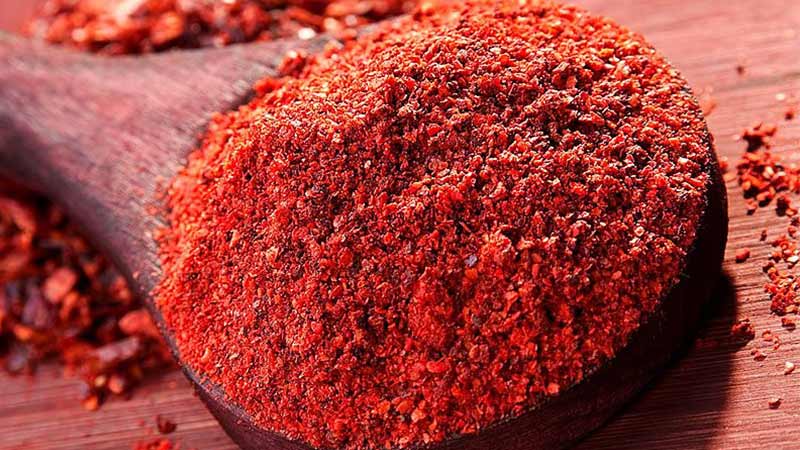
11- Turmeric: A Strong Antioxidant
Turmeric is one of the most commonly used spices in the world, primarily yellow in color and known for its antioxidant properties. It is used in preparing various meat dishes, rice, chicken, sauces, and stews. Some of the properties of turmeric include:
Anti-Inflammatory Properties: Turmeric contains compounds called curcuminoids which have strong anti-inflammatory properties. These can help reduce inflammation and symptoms like pain and swelling.
Antioxidant Properties: Turmeric has strong antioxidant properties that can help combat oxidative damage and protect cells against it.
Relieving Digestive Problems: Turmeric may help reduce digestive issues such as indigestion, bloating, and irritable bowel syndrome.
Use in Cosmetic and Hygiene Products: Turmeric is used in cosmetic and hygiene products like creams, soaps, and face masks for its antibacterial and anti-inflammatory properties.
Use in Traditional Medicine: In Asian traditional medicine, turmeric has been used to treat various ailments including inflammation, diabetes, heart and neurological diseases, arthritis, fatty liver, and cancer.
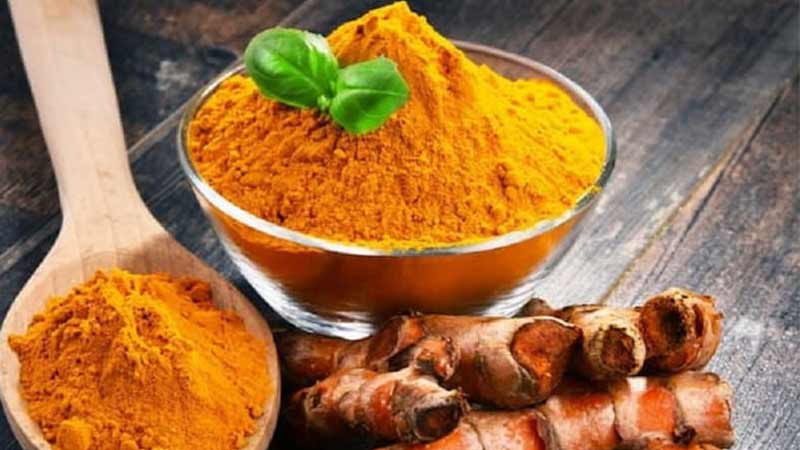
12- Nutmeg: A Warm-Spiced and Spicy Seasoning
Nutmeg, with its hard shell, reveals a fatty and tasty substance inside, known as nutmeg meat, available fresh, dried, or pickled. Nutmeg meat is used both as a food item and a spice. Nutmeg has numerous culinary and health properties, including:
Providing Energy: Nutmeg meat contains a significant amount of healthy fats, acting as a natural and quick source of energy.
Containing Antioxidants: Nutmeg contains powerful antioxidants like phenols, which can help combat oxidative damage and protect cells.
Anti-Inflammatory Properties: Some compounds in nutmeg, like lauric acid and capric acid, have anti-inflammatory properties that can help reduce inflammation and associated symptoms like pain and swelling.
Containing Fiber: Nutmeg meat is high in fiber, which can improve digestion, regulate blood sugar, and maintain heart and vascular health.
Use in Cooking: Nutmeg is a common spice in cooking and can be used in a variety of dishes, desserts, juices, sauces, and stews.
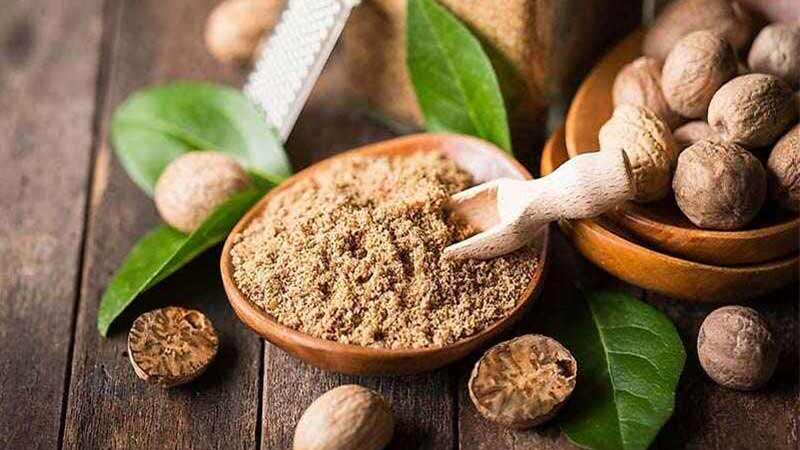
Conclusion
In conclusion, Persian spices are like magical ingredients that bring a burst of flavor to dishes. These aromatic and colorful seasonings have been cherished for centuries, not only for their taste but also for their health benefits. From the warmth of saffron to the kick of cumin, Persian spices add a special touch to foods that make them unforgettable. Whether used in savory stews or sweet desserts, these spices are at the heart of Persian cuisine, creating a rich tapestry of flavors that delight the senses. Exploring the world of Persian spices is like going on a delicious journey through history and culture, where each spice tells a unique story on your plate.



